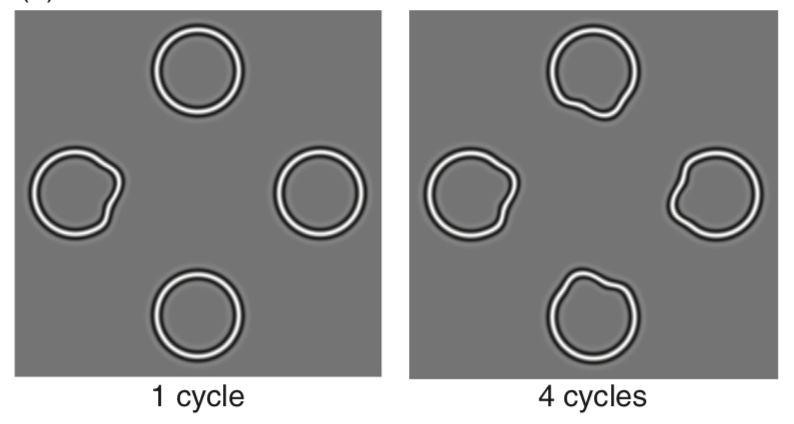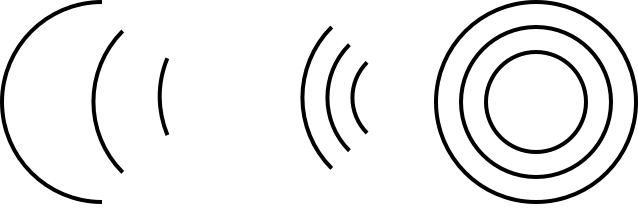Contour-and Curvature Encoding & Shape Perception
The visual system is confronted with a sheer endless variety of shapes and objects. Yet, humans are incredibly efficient in shape detection, discrimination and recognition. Physiologically, visual neurons at early cortical stages (primary visual cortex) are often described as filters tuned to orientation and spatial frequency. The complexity of stimuli, which neurons are selectively responsive to, increases along the "ventral pathway", so that cells at the level of the inferotemporal cortex are selectively responsive to much more complex stimuli such as faces. It is still largely unknown, how these physiological properties of neurons in the visual cortex lead to the perception of the vast number and variety of objects and shapes in the visual world. I am particularly interested in models of shape representation and use computational and experimental (psychophysical) methods to study shape recognition, detection and discrimination.
Schmidtmann, G., & Fruend, I. (2019). Radial frequency patterns describe a small and perceptually distinct subset of all possible planar shapes. Vision Research, 154, 122–130. [PDF] [PubMed]
Schmidtmann, G. & Kingdom, F. A. A., (2017). Nothing more than a pair of curvatures: A common mechanism for the detection of both radial and non-radial frequency patterns. Vision Research, 134, 18–25 [PDF]
Baldwin, A. S., Schmidtmann, G., Kingdom, F. A. A., & Hess, R. F. (2016), Rejecting probability summation for radial frequency patterns, not so Quick! Vision Research, 122, 124–134. [PDF] [PubMed]
Schmidtmann, G., Jennings, B. J., Kingdom, F. A. A. (2015). Shape recognition: convexities, concavities and things in between. Scientific Reports, 5, 17142. http://doi.org/10.1038/srep17142 [PDF]
Schmidtmann, G., Logan, A.J., Kennedy, G.J., Gordon, G.E. Loffler, G. (2015), Distinct lower visual field preference for object shape. Journal of Vision (2015) 15(5):18, 1–15 [PDF]
Schmidtmann, G., Gordon, E.G., Bennett, D.M., Loffler, G. (2013), Detecting shapes in noise: tuning characteristics of global shape mechanisms, Frontiers in Computational Neuroscience, 7, 37 , 1-14 [PDF]
Schmidtmann, G., Kennedy, J.G., Orbach, H.S., Loffler, G. (2012). Non-linear global pooling in the discrimination of circular and non-circular shapes. Vision Res, 62C, 44-56 [PDF]
Spatial Summation, Probability Summation & Signal Detection Theory
There is physiological and psychophysical evidence that suggests that neurons in the early visual cortex are tuned to particular stimulus features, such as orientation and spatial frequency. Behaviorally, however, the stimuli that are ecologically relevant are more complex, e.g. objects, faces, etc. Hence, the visual system must contain mechanisms that combine the localised outputs from early cortical regions. This leads to the important questions of how these outputs are combined? In a series of theoretical and experimental studies, we have developed the computational basis for these mechanisms and tested the prediction of such models in various domains of vision, in particular binocular summation, shape discrimination and the detection of orientation-defined textures.
Schmidtmann, G., Kingdom, F. A. A., & Loffler, G. (2019). The processing of compound radial frequency patterns. Vision Research, 161, 63–74. [PDF] [PubMed]
Baldwin, A. S., Schmidtmann, G., Kingdom, F. A. A., & Hess, R. F. (2016). Rejecting probability summation for radial frequency patterns, not so Quick! Vision Research, 122, 124–134. [PDF]
Schmidtmann, G., Jennings, B. J., Bell, J., & Kingdom, F. A. A. (2015). Probability, not linear summation, mediates the detection of concentric orientation-defined textures. Journal of Vision, 15(16):6, 1–19, [PDF]
Kingdom, F. A. A., Baldwin, A. S., Schmidtmann, G. (2015) Modeling probability and additive summation for detection across multiple mechanisms under the assumptions of signal detection theory. Journal of Vision, Vol.15, 1. doi:10.1167/15.5.1 [PDF]
Peripheral Vision
It is well established that the performance in visual tasks typically decreases with increasing eccentricity. This is mainly due to the decreasing density of photoreceptors in the peripheral retina. However, the effect of eccentricity on sensitivity is not homogeneously distributed across the visual field and visual field asymmetries have been described. For instance, we could show that the ability to discriminate simple shapes is best in the lower visual field.
Schmidtmann, G., Logan, A.J., Kennedy, G.J., Gordon, G.E. Loffler, G. (2015), Distinct lower visual field preference for object shape. Journal of Vision (2015) 15(5):18, 1–15 [PDF]
Most recently, we investigated the feasibility of letter optotypes in visual acuity measurements in central and peripheral vision with particular interest in response biases.
Georgeson, M. A., Barhoom, H., Joshi, M. R., Artes, P. H., & Schmidtmann, G. (2023). Revealing the influence of bias in a letter acuity identification task: A noisy template model. Vision Research, 208, 108233. https://doi.org/10.1016/j.visres.2023.108233 [PDF]
Barhoom, H., Joshi, M. R., & Schmidtmann, G. (2021). The effect of response biases on resolution thresholds of Sloan letters in central and paracentral vision. Vision Research, 187, 110–119. [PDF]
Visual Illusions
Get close to the monitor and move your eyes across the image.
Visual illusions provide valuable information about the mechanisms of human visual perception and its limitations and are therefore useful for gaining insights into the underlying processes.
The left image on the top shows the flattening of arcs, sometimes also referred to as the Arc-Size Illusion. All three arcs belong to circles with identical radii, but different arc lengths. Note that the shorter arcs appear flatter than the longer ones, despite their equal curvature. Conversely, the arcs on the right side appear equally curved, despite their different curvature. Schmidtmann et al. (2016) quantified the Arc-Size Illusion and proposed a perceptual model.
Schmidtmann, G., Ouhnana, M., Loffler, G., Kingdom, F.A.A. (2016) Imagining circles - empirical data and a perceptual model for the Arc-size Illusion, Vision Research, 121, 50-56 [PDF]
Another interesting illusion can be seen in the figure on the right. This is an example of an apparent or illusory motion (the perception of motion in the absence of motion). The apparent motion works best if you get close to the monitor and move your eyes across the panel. Check Michael Bach’s website for a great collection of visual illusions.
Face Perception & Emotions (McGill Face Database)






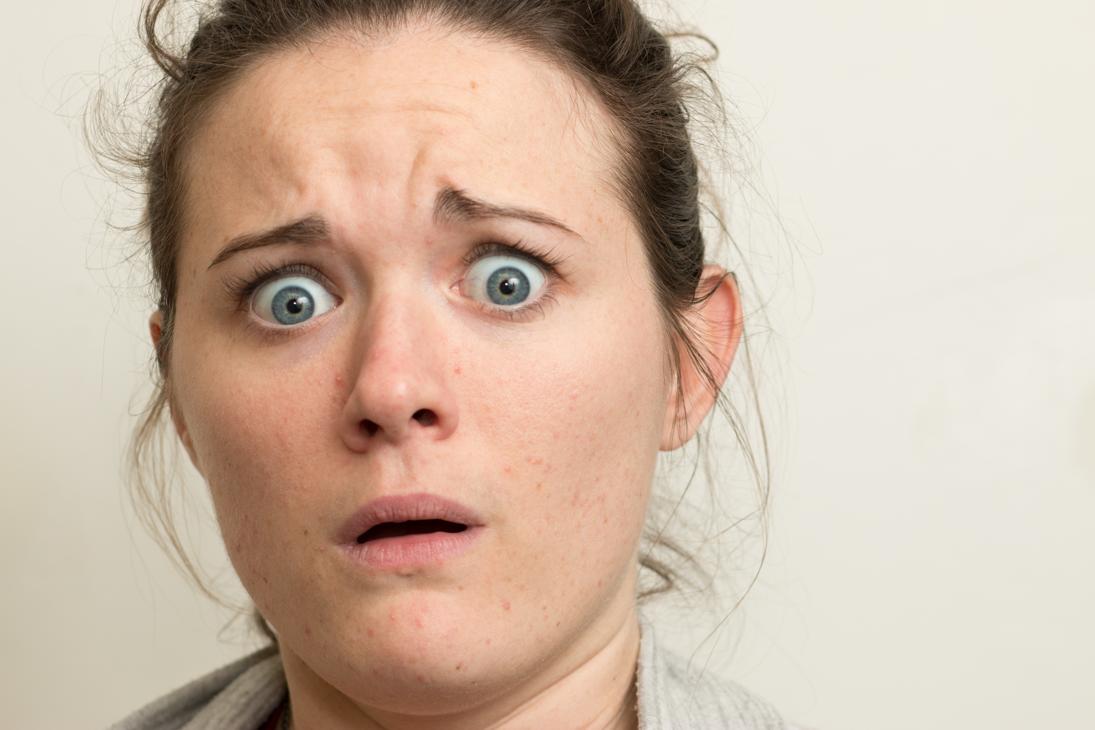
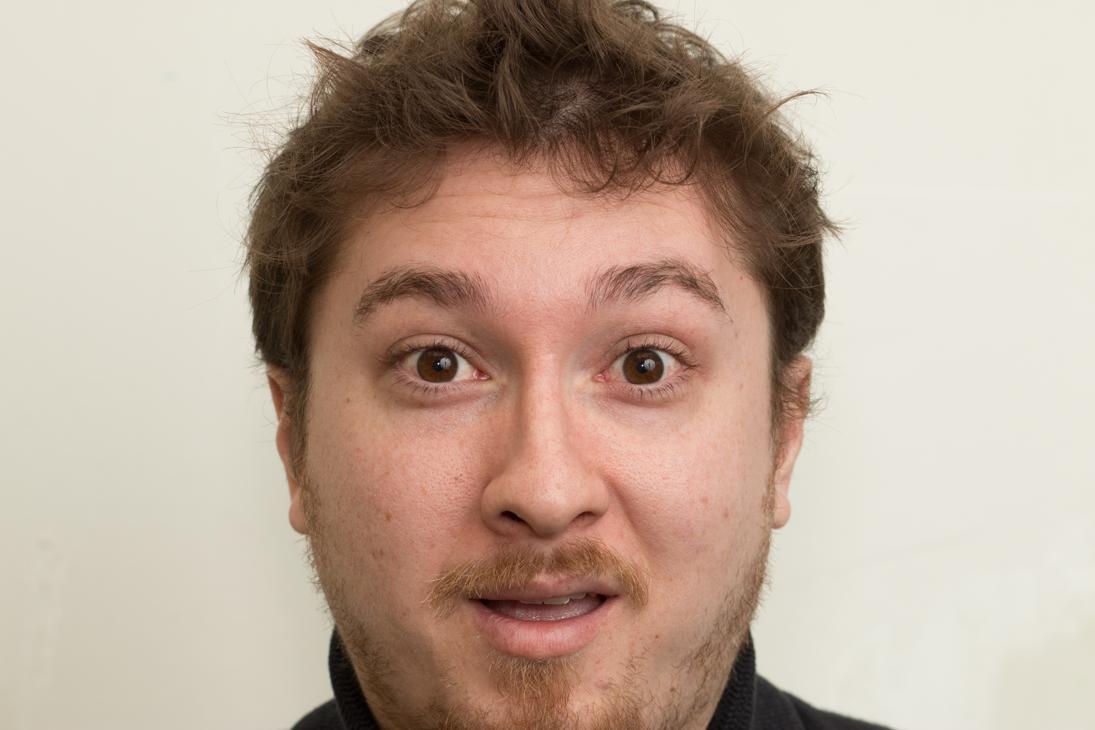
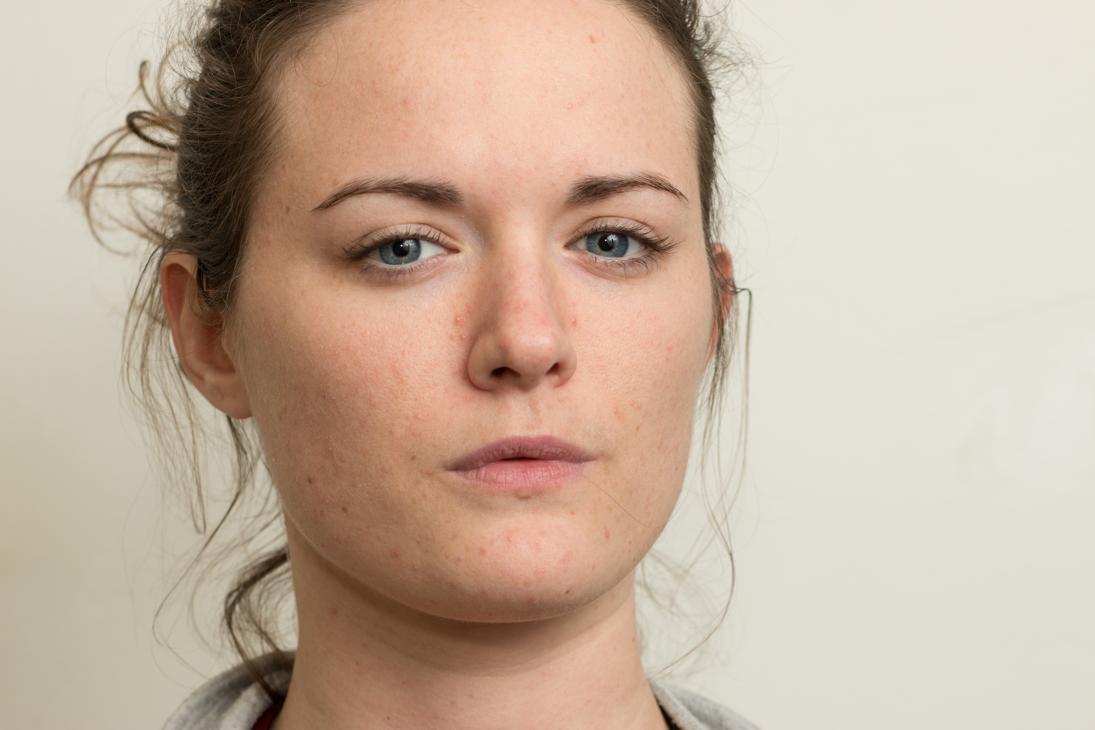


Current databases of facial expressions of mental states typically represent only a small subset of expressions, usually covering the basic emotions (fear, disgust, surprise, happiness, sadness, anger). To overcome these limitations, colleagues at McGill University and I have created a large new database of pictures of facial expressions reflecting the richness of mental states. 93 expressions of mental states were interpreted by two professional actors and high-quality pictures were taken under controlled conditions in front and side view. In addition to the validated English version, the database is also available in French and German. It is freely available for scientific, non-commercial purposes.
Little, C., Solomonova, E., Jordan, M., Klein, N., Jennings, B., Schmidtmann, G., Leos, H., & Gold, I. (2022). The discrimination of self from other as a component of empathy. Emotion. Advance online publication. https://doi.org/10.1037/emo0001193 [PDF]
Schmidtmann, G., Logan, A. J., Carbon, C. C., Loong, J. T., Gold, I. (2020). In the blink of an eye: Reading mental states from briefly presented eye regions. i-Perception, 11(5), 1–18. [PDF]
Schmidtmann, G., Jennings, B. J., Sandra, D. A., Pollock, J., & Gold, I. (2020). The McGill Face Database: Validation and Insights Into the Recognition of Facial Expressions of Complex Mental States. Perception. https://doi.org/10.1177/0301006620901671
Schmidtmann, G., Jordan, M., Loong, J.T., Logan, A.J., Carbon, C.C., & Gold,I. Temporal processing of facial expressions of mental states. BioRxiv 602375; doi: https://doi.org/10.1101/602375 [PDF]
Schmidtmann, G., Jennings, B. J., Sandra, D. A., Pollock, J., & Gold, I. (2019). The McGill Face Database: validation and insights into the recognition of facial expressions of complex mental states. BioRxiv, 586453. https://doi.org/10.1101/586453 [PDF]
The Database can be accessed HERE.
Visual Functions of Patients with Traumatic Brain Injuries
Patients with Traumatic Brain Injuries (TBI) frequently suffer from visual discomfort and visual deficits. During my postdoc at the Farivar Lab at the McGill Vision Research Unit as part of the Traumatic Brain Injury Program, I investigated visual functions of patients with TBI. We previously conducted psychophysical experiments to understand the mechanisms underlying these symptoms.
Together with Prof Jon Marsden and clinicians from the Peninsula Medical School at the University of Plymouth, we are currently investigating the influence of TBI on visual and vestibular functions.
Jennings, B. J., Schmidtmann, G., Wehbé, F., Kingdom, F. A. A., & Farivar, R. (2019), Detection of distortions in images of natural scenes in mild traumatic brain injury patients. Vision Research, 161, 12-17 [PDF] [PubMed]
Schmidtmann, G., Ruiz, T., Reynaud, A., Spiegel, D.P., Lague-Beauvais, M., Hess, R.F., Farivar, R. (2017), Sensitivity to binocular disparity is reduced by mild traumatic brain injury. Invest Ophthalmol Vis Sci. 2017; 58:2630–2635. [PDF] [PubMed]
(A) Individual quick disparity sensitivity functions (qDSFs) for the normative dataset (N = 61, Reynaud et al., Vision Res. 2015). (B) Individual qDSFs for the mTBI group (N = 22). (C) Average qDSFs expressed as the nonparametric pseudomedian for the normative dataset in blue and the mTBI group in red. The shaded areas represent nonparametric 95% confidence intervals. *p < 0.05 Mann-Whitney U test. Figure 2 from Schmidtmann et al., IOVS, 2017
Glaucoma & Intraocular Pressure
Glaucoma is a complex genetic ocular disease, which leads to a degeneration of retinal ganglion cells and is still one of the most common causes of visual impairment and blindness worldwide. Increased ocular pressure has been associated with an increased risk to develop glaucoma. We could show that playing common exercises on wind instruments, especially high-resistance wind instruments, such as oboe or trumpet, leads to sudden strong fluctuations in the ocular pressure with peak values clearly in the ocular hypertension range.
Schmidtmann, G., Jahnke, S., Seidel, E.J., Sickenberger, W., Grein, H.J. (2011), Intraocular pressure fluctuations in professional brass and woodwind musicians during common playing conditions. Graefes Arch Clin Exp Ophthalmol, 249 (6), 895-901. [PDF] [SUNDAY TIMES] [BBC Radio Interview]
Jahnke, S, Schmidtmann, G., Grein, H.J., Seidel, E.J., Sickenberger, W. (2011), Dynamik des Augeninnendrucks bei professionellen Holz- und Blechbläsern während alltäglicher Spielsituationen. Musiker Medizin und Physiologie, 3, 70-78



